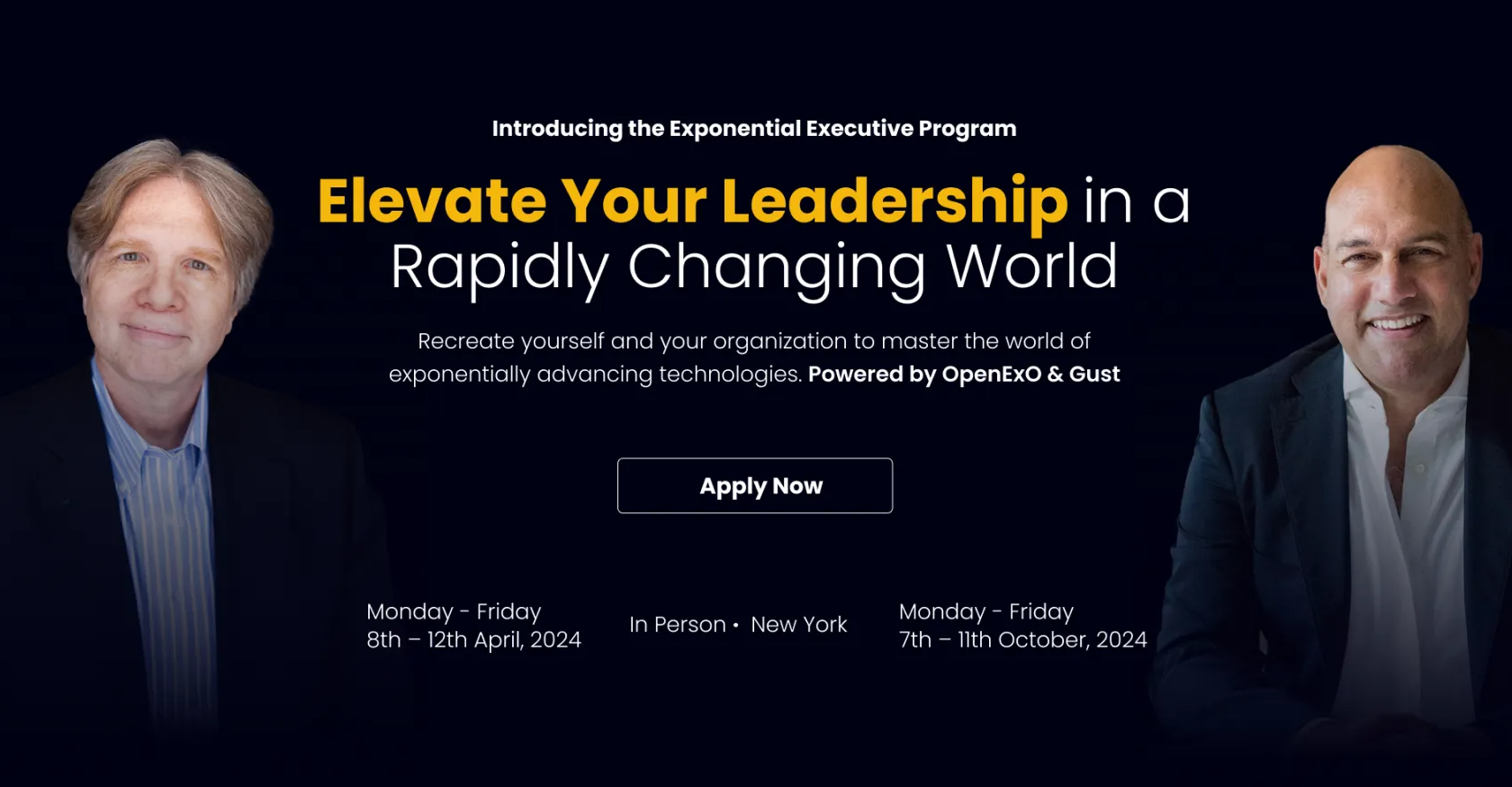
Smarter Organizations by Design
We need a conceptual overlap development of how exponential thinking fits in digital transformation because they can benefit from each other. Those working on developing a consultancy sustained by exponential thinking can see their target market multiply exponentially.
What comes after the ExO Core Initiative?
On page 345 of the ExO Sprint model monumental playbook, I read (I paraphrase): the selection of your ExO Core Initiative is not the end – far from it; it marks the beginning of your organization’s transformation process! Colossal and decisive process!... How about staying with the organization until it sees business results? Wouldn’t it be great if we worked on the consultive tools to help them with that?
I still read news like the one on IT News Africa.com that says that 70% of "digital transformation" projects fail. Is it only in Africa that this happens? I doubt it. I also read that 5% of the effort is technological, and 95% is training and convincing people. Of course, because it is perceived as an invasion of technology.
The issue is that organizations have always been information systems. In case there is any skepticism about this observation, I asked ChatGPT to confirm it; here is what it says:
ChatGPT
"Yes, an organization can be considered an information system in itself. An organization is composed of people, processes, resources, and technology that interact and communicate with each other to achieve common goals.
ChatGPT continues: In the context of an information system, an organization collects, processes, stores, and distributes information internally and externally. The organization's employees collect data, process it, and use it to make decisions and carry out administrative activities. Information is stored in various formats, such as physical or digital documents, databases, and management systems.
In addition, communication and information transfer are fundamental in an organization, whether through meetings, e-mails, phone calls, internal messaging systems, or "any other means of communication." Information is shared and distributed among the organization's members so that they can collaborate, coordinate their activities, and achieve the established objectives.
Thus, from this perspective, an organization can be viewed as an Information System in which data flows and is transformed to facilitate decision making, coordination of activities, and achievement of organizational goals."
No wonder the Productivity Paradox happened and still lurks as a cautionary concept. The productivity paradox refers to the observation that, despite significant investments in information technology (IT) and computerization, there may be a delay or a lack of evident increase in productivity. This concept gained attention in the 1980s and 1990s when businesses invested heavily in computers and information systems, expecting substantial productivity improvements. Nevertheless, we read the news today and find that organizations still need help introducing IT technologies to become more competitive. Something still needs to be fixed with implementations.
I think IT professionals conquered the world as masters of the architecture and development of information systems but never empathized with the concept of organizational architecture. The idea that organizations are information systems didn’t bring the methodologies for developing systems closer to the management sciences. The methods were developed in software engineering, and no attention was paid to the development of the conceptual model of the organization, treated as an information system. Models of organization architecture and information systems have developed in separate worlds that do not communicate well.
Organizations have seen IT as a sophisticated tool to invest in to compete, but not as the bricks needed to shape a new organizational architecture. When have we seen it mentioned that it is impossible to decentralize without a dashboard, that a manager cannot delegate his responsibility, that he will always remain the main responsible for the decisions his subordinates make, and if decentralization is the organizational architecture that needs to be implemented, in addition to all the training and motivation of human resources, the use of technology, ex-ante and not a posteriori, is a must as the enabler of the new organizational model (the playbook approach?).
Companies that sell prefabricated information systems enable the existing architecture but limit the organization's development. It is not in their interest to promote changes in the organizational architecture so as not to complicate the project they are responsible for.
When one searches the web for articles on Exponential Organizations and Digital Transformation, it is evident that different groups champion these concepts based on their expertise and interests in technology, business strategy, or organizational innovation. Nevertheless, there is an essential overlap in practice. To clarify, I asked ChatGPT if “digital transformation” and “exponential organizations” can be considered concepts on opposite sides of the fence. It answered:
“While there is some overlap between the two concepts, they address different dimensions of organizational change. Digital transformation is adapting and evolving an organization's internal processes and functions using digital technologies. In contrast, exponential organizations focus on leveraging external resources and technologies to achieve rapid growth and scale of organizations conceived as exponential since the beginning.
However, it's worth noting that organizations pursuing digital transformation may adopt some principles of exponential organizations, such as embracing open innovation, leveraging external platforms, and being adaptable in the face of technological advancements (Tesla). In this sense, the two concepts are not mutually exclusive, and “exponential thinking” elements can be integrated into a digital transformation strategy.
That means we need a conceptual overlap development of how exponential thinking fits in digital transformation because they can benefit from each other. Those working on developing a consultancy sustained by exponential thinking can see their target market multiply exponentially. Bing's Copilot says:
“According to a Tech Pro Research survey, approximately 70% of companies either have a digital transformation strategy in place or are actively working on one…Moreover, global spending on digital transformation is expected to reach $6.8 trillion by 2023, emphasizing the widespread adoption of these initiatives.”
The most palpable example of the overlap is Tesla. This company is included among the list of exemplary exponential organizations despite failing to meet the condition of working with external assets. It is a hybrid of digital transformation with exponential thinking.
Going back to my book "Smarter Organizations by Design," one of the concepts I consider most important to develop is the difference between a tool project and a result project. A project tool only leaves a tool running in the organization, while a project outcome is committed and remains until the intended business results are achieved. Business results that are designed to cover the IT investment.
All the application implementation projects in the market that I have known consider the project's culmination with the "go live" of the application and tool. Which is not a business result. On top of that, they structure their implementation methodology based on application modules that replicate organizational silos. Obviously, they do not produce significant changes in the organizational architecture; their approach is based on asking users what their current requirements are, not what their future requirements will be, those of the new organization. The top benefits of adopting a digital model are it improves operational efficiency, allows for faster time to market, and helps meet customer expectations. Are these business results controlled as part of the projects? Is the implementation methodology based on precursor milestones of the expected benefit?
In my book, "Smarter Organizations by Design," I establish the groundwork for intelligent organizations, drawing inspiration for the concept of intelligence from Sternberg, R. J., and Salter, W.'s (1982) "Handbook of Human Intelligence. Cambridge, UK: Cambridge University Press. ISBN 0-521-29687-0OCLC11226466: “Goal-directed adaptive behavior,” complemented by a concept that I (re)define: Structural Management, "Management based on causal chains of Key Performance Indicators that control the fulfillment of the organization's main goals," This gives rise to a permanent learning and correcting process in the organization.
The development of the conceptual model of the administrative information system that constitutes the intelligent organization is discussed in a language that senior management students can understand.
For a conclusion at the end, concerning what would be the most competitive organizational architecture, I only looked for a description of the T-1000 from “Terminator 2: Judgment Day”. It transforms into any shape or object; it can mimic humans and merge with its surroundings; it repairs itself by flowing back together; it is silvery appearance and fluid movements create an eerie and unforgettable visual effect; it can flow, stretch, and reshape itself at will…
Can an organization reproduce this architecture? The T-1000 can be considered a metaphor for highly adaptable and responsive organizations. In this sense, organizations can strive to be more agile, data-driven, and capable of rapid change, aligning with ExO, SCALE, and IDEAS principles. Nevertheless, most organizations will still require their capital assets, which might allow exponential growth at the beginning (remember Tesla). Still, at some point, this will put a damper on the growth curve, which will be overcome when technology allows production on request and organizations learn how to implement ad hoc processes.

Exponential Executive Program. Transform your leadership and navigate the future of technology. 🚀 Spend a full week with Salim Ismail & David Rose.
New York City | 8-12 April, 2024
Discover more about the Executive Program here.
ExO Insight Newsletter
Join the newsletter to receive the latest updates in your inbox.









